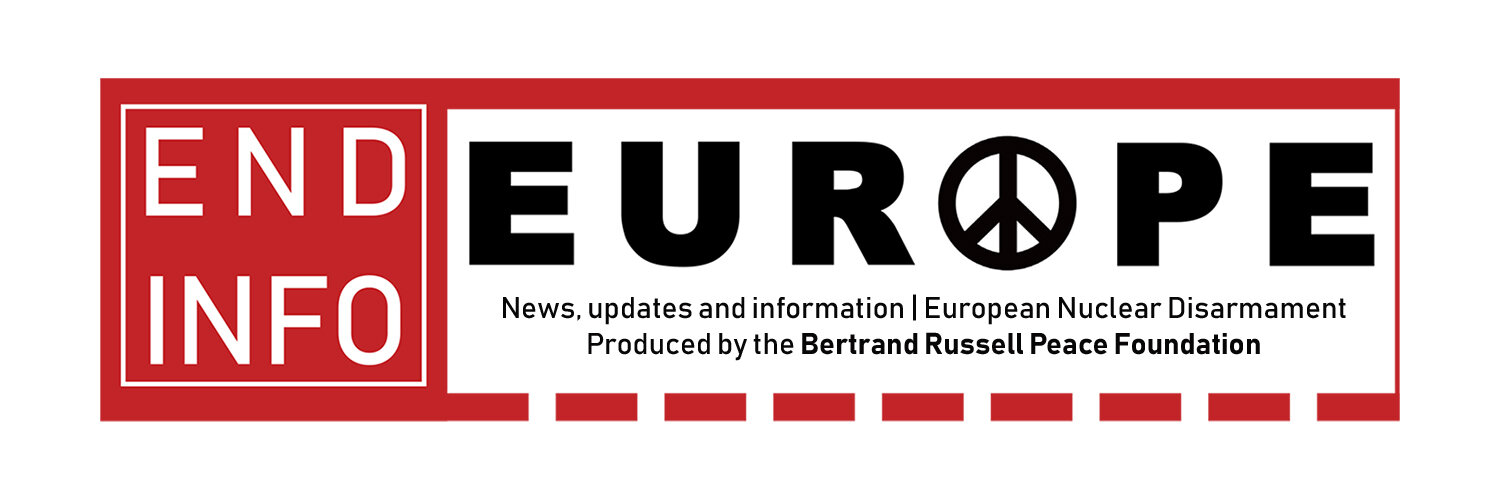Depleted Uranium: Deadly, Dangerous and Indiscriminate
From END Info 37
Britain’s announcement that it will deploy Depleted Uranium (DU) weapons to Ukraine is a dangerous escalation that will do nothing to aid the people of that country. Rather, the opposite could be the case.
There have been a large number of studies detailing the very dangerous health and environmental impacts of the military use of DU, yet Great Britain - along with other states which possess and use DU - refuse to openly acknowledge the risks. One particularly unpleasant example of this was reported in the British press in 1999, following the use of DU in Kosovo (see Felicity Arbuthnot, ‘Depleted Uranium Warning Only Issued to MoD Staff’, Sunday Herald, August 1 1999). British MoD personnel were warned to stay away from areas where DU had been used unless they were wearing full radiological protective clothing. The same warning was not given to returning Kosovans who wanted nothing more than to go home. Why the difference in attitude?
The International Atomic Energy Agency (IAEA) website refers to two studies (M A Mcdiarmid et al, Environ. Res. A 82 168-180 (2000) and G J Macfarlane et al, The Lancet 356 17-21 (2000)) on the impact of DU on service personnel. Specifically, these studies relate to soldiers who had fragments of DU embedded in their bodies. This is a curious state of affairs given the enormous number of individual studies, evidence and reports detailing the risks associated with inhaling or ingesting DU dust and contaminants. Why are the only studies cited related to chunks or splinters of DU embedded within the bodies of soldiers?
The US Agency for Toxic Substances and Disease Registry, a department of the Center for Disease Control, explains the chemically toxic effects on kidneys and lungs resulting from the inhalation of DU, the fact that DU can enter the water system and food chain and that it can travel large distances. The US is concerned about DU ‘at home’ but not on battlefields on the other side of an ocean.
There must be an immediate moratorium on the deployment and use of DU weapons until a full, long-term and independent epidemiological study on the locations where DU has been used is completed. The UN General Assembly is right to demand - as it did in 2007 - for greater transparency of the use and clean-up of DU weapons. It is worth noting that the UK, US, France and Israel voted against this Resolution.
It is sometimes suggested that DU is a ‘nuclear weapon’ in the same bracket as fission and fusion devices. Although DU is a ‘nuclear material’, there is no nuclear fission or fusion when these weapons are used. Rather, when fired DU burns at over 3000 degrees centigrade and becomes a ‘ceramic uranium aerosol’ that has special properties on impact - ie. it does not deform in the same way as other materials, meaning it can puncture heavy armour. However, DU produces microscopic fragments which are radioactive and chemically toxic that are distributed over the area surrounding impact and which can spread far and wide. It is these particles that produce long-term health and environmental effects.
The use or potential use of such weapons in Ukraine should alarm the people of that country, who have surely suffered enough as a result of this war. DU poses significant health and other concerns and could do further damage to an already damaged country.

